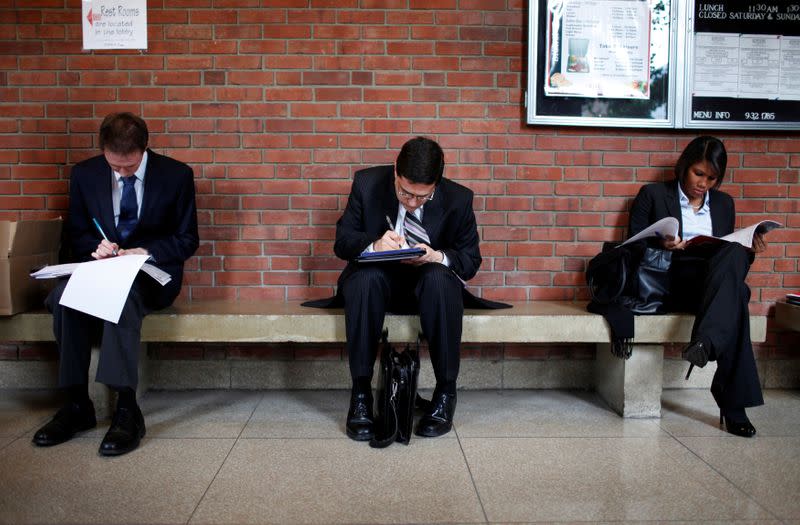U.S. employment in the 2010s in five charts
By Dan Burns and Howard Schneider
NEW YORK/WASHINGTON (Reuters) - The last U.S. employment report of the 2010s out Friday had few surprises, but it wrapped up a decade that featured some notable milestones in a job market that has changed dramatically in the space of 10 years.
RECORD DECADE FOR JOB CREATION
The 2010s will go into the record books - for at least another 10 years - as the decade that saw the greatest number of jobs created in the United States: 22.6 million.
It was a welcome recovery from the 2000s, the only decade in the history of Bureau of Labor Statistics data to feature a net loss of jobs, thanks largely to the two recessions that bookended that era. December's report was the 111th monthly scorecard in a row to show employment gains, and the U.S. economy ended the decade with a record 152.4 million people working.
(GRAPHIC: A decade of record job creation - https://fingfx.thomsonreuters.com/gfx/mkt/13/873/871/Pasted%20Image.jpg)
ULTRA-LOW UNEMPLOYMENT
The headline unemployment rate of 3.5% matched a low from half a century ago and is roughly a third of the level at the start of the decade.
A wider measure of unemployment - which counts Americans out of work, people involuntarily working part-time, and those just marginally attached to the workforce - fell to a record low in December. This so-called U-6 rate is down to 6.7% from a record-high 17.1% as the decade began.
Still, one in five of those out of work stayed unemployed for half a year or more, a percentage more typically seen during recessions.
(GRAPHIC: A gauge of U.S. unemployment is at a record low - https://fingfx.thomsonreuters.com/gfx/mkt/13/877/875/Pasted%20Image.jpg)
MANUFACTURING COMEBACK? SORT OF
Factory employment fell 12,000 in December, but in the last 10 years it rebounded overall, with nearly 1.4 million production jobs created, the most since the 1960s and reversing a three-decade trend of losses.
Total manufacturing employment, however, remains lower than before the Great Recession.
Moreover, despite the recovery, factory positions continue to lose ground against services, where the vast majority of new jobs were created in the 2010s. Manufacturing's share of total U.S. employment ended the decade at just 8.4%, roughly a quarter of its peak share after World War II.
(GRAPHIC: Manufacturing jobs bounced back in the 2010s - https://fingfx.thomsonreuters.com/gfx/mkt/13/879/877/Pasted%20Image.jpg)
A COUNTRY OF IMMIGRANTS?
With unemployment near a record and employers complaining about a lack of available workers, foreign-born residents might seem a natural choice to help fill the gap.
But immigration restrictions from the Trump administration appear to be stymieing the growth of that labor pool.
December's payrolls report showed 170,000 fewer foreign-born workers employed than a year earlier, the fourth month in a row of year-over-year declines. Some 600,000 fewer foreigners were working in the United States in December than last February, when it hit a record.
(GRAPHIC: Immigration effect? - https://fingfx.thomsonreuters.com/gfx/mkt/13/874/872/Pasted%20Image.jpg)
THE GENDER WARS
Seeing more women at your workplace? You should.
Women have rejoined the workforce in greater numbers since the recession, and the percentage of prime-age women 25 to 54 years old who are active in the workforce is just shy of its record levels from the late 1990s and early 2000s.
Meanwhile, the comparable measure for men has barely moved this past decade, and December's report showed the prime-age gender gap was the narrowest ever at 12.4 percentage points.
(GRAPHIC: U.S. workforce participation - https://fingfx.thomsonreuters.com/gfx/mkt/13/881/879/Pasted%20Image.jpg)
(Additional reporting by Jonnelle Marte in New York; Editing by Richard Chang)


